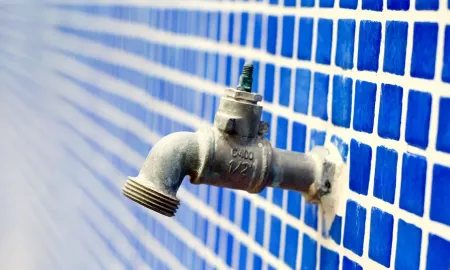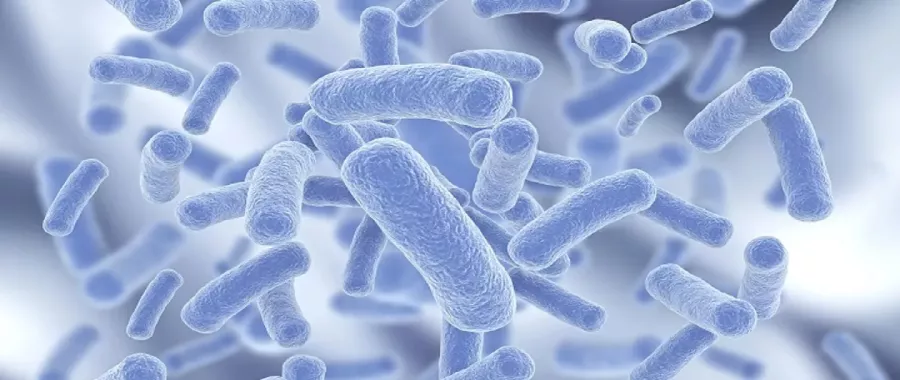From depots and on-board facilities to redundant outbuildings and old carriage wash systems, Legionella bacteria can grow in a wide range of locations within the rail industry. But who is responsible for managing the risk of Legionella and ensuring the health of safety of employees and the general public? In this blog, Paul Sear, national technical manager within SOCOTEC’s Water Hygiene team, explores the role that rail organisations must play with regards to Legionella management and the various responsibilities that this entails.

Which areas of legislation must rail organisations comply with in terms of Legionella management?
The only area of legislation which provides specific advice and guidance for Legionella management and control in standard water systems is Legionnaires’ disease: The control of Legionella bacteria in water systems, Approved Code of Practice and Guidance on Regulations (L8). Written and published by the HSE, ACOP L8 is a legally binding document aimed at those in control of the premises (otherwise known as duty holders), providing advice and guidance on how to identify, assess, manage and control the risk of Legionella in the workplace. In addition, HSG 274 provides technical guidance on the management of Legionella risk in different types of water systems. Part 2: The control of legionella bacteria in hot and cold water systems bears the most relevance for the rail industry with regards to on board water systems, outlining the monitoring and maintenance regimes and their frequencies required to ensure health and safety.
In terms of more general legislation that covers Legionella management, the Health & Safety at Work Act 1974 states that the duty holder has a duty of care to ensure the health, safety and welfare of employees so far as is reasonably practicable. What’s more, Legionella is considered hazardous to health under the Control of Substance Hazardous to Health Regulations 2002, which requires duty holders to undertake a risk assessment and, if there is a foreseeable risk, implement suitable control measures and ensure that the individuals responsible for managing this risk are suitably and sufficiently trained.
Similarly, need to manage the risks posed by Legionella also falls under the Management of Health & Safety at Work Regulations 1999, which highlights the importance of processes and procedures to prevent the growth of Legionella bacteria, as well as discussing the appointment of responsible persons to implement adequate control measures. Within this specification, responsible persons must undertake risk assessments, training and implement procedures should serious issues arise, such as an employee contracting Legionnaires’ disease.
Other legal requirements for Legionella management include the Notification and Cooling Towers and Evaporative Condenser Regulation 1992 and the Reporting of Injuries Diseases and Dangerous Occurrence Regulations (RIDDOR) 2013. There are also many British Standards providing advice and guidance on how to manage the risk, including BS 8580 Water Quality – Risk Assessments for Legionella Control – Code of Practice and BS 7592 Sampling for Legionella Bacteria in Water Systems – Code of Practice.
Who is considered a responsible person when it comes to Legionella management?
The role of a competent/responsible person is set out in paragraphs 48-57 of ACOP L8, and this individual must be specifically appointed in writing by the duty holder or their representative. In order to qualify for the role of responsible person, the individual in question must have sufficient authority, competence and knowledge of Legionella and the systems they are responsible for, and will more than likely be working within a management-based role in the facilities, estate or health and safety sectors.
The appointed responsible person will manage the level of risk on a day-to-day basis, and it is their duty to ensure compliance by undertaking Legionella risk assessments, implementing a written scheme of control and ensuring that records are kept and that anyone involved in the Legionella management process is suitably trained and competent. Inadequate management and lack of training are contributory factors in most cases and outbreaks of Legionnaires’ disease, and it is vitally important that the competent person is fully aware of their responsibilities and has up-to-date knowledge and awareness of Legionella to ensure that they are fully capable of effectively managing the level of risk.
What responsibilities do duty holders have in order to prevent the risk of Legionella growth within the rail sector?
One of the main legal requirements within ACOP L8 is for duty holders to have an up-to-date, suitable and sufficient Legionella risk assessment for their water system in place. This requires responsible persons to identify any potential hazards, consider who may be at risk of exposure, keep records and implement/review control measures. Furthermore, having the appropriate control measures in place will allow rail operators to control the conditions in which bacteria can multiply, reduce aerosol generation and human exposure. There are a variety of precautions that can be implemented to minimise the risk of bacterial growth, including temperature control, regular turnover of fresh water, cleaning and chlorination, sampling and water pre-treatment.
Another legal requirement under ACOP L8 is to ensure that water systems are regularly monitored and maintained in line with the recommendations outlined within your Legionella risk assessment and written scheme. Based on the control measures you already have in place or the recommendations within your risk assessment, a monitoring programme is necessary in order to demonstrate that these control measures are effective. Examples of control measures include regular flushing, temperature monitoring, chemical level checks, condition inspections, cleaning, disinfection and sampling. How often you will need to carry out monitoring is referenced in the Technical Guidance document HSG274 Part 2 provides guidance on monitoring tasks and required frequencies.
Finally, keeping records of all aspects of your organisation’s Legionella control and management process is essential in order to demonstrate that your water systems are under control and well managed. Information that should be recorded includes names, positions and contact details of those involved in the control process, a copy of the risk assessment, method statements and a log for contractors, consultants and visitors. By keeping this evidence up-to-date, you will be able to demonstrate to the Office of Rail and Road (ORR) and the HSE that you are effectively managing the risks present within your water system.
How has the COVID-19 pandemic impacted the ways in which rail organisations manage the risks posed by Legionella?
It is a well-known fact that Legionella bacteria thrives in stagnant conditions, and given the increase in the number of employees working from home since the beginning of the pandemic, it is vitally important that water services in depots, stations, offices and on-board trains are being flushed on a regular basis to replicate normal usage as much as possible.
As we begin to slowly ease out of the third national lockdown and return premises back to their normal level of occupancy, it is important that water systems remain safe for people to use. If systems have been out of use, they must be recommissioned correctly.
To discover more about how you can manage both domestic and non-domestic water systems during periods of reduced occupancy, click here.
Want to find out more about SOCOTEC’s Water Hygiene services?
SOCOTEC can support your organisation with Legionella risk assessments, consultancy, management and training. Click here to find out more.
Want to find out about SOCOTEC's legionella training?

You might also like







Add new comment